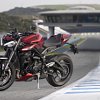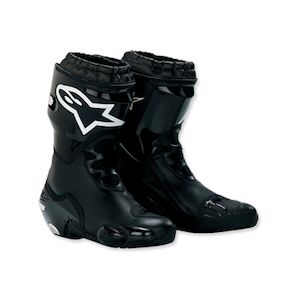When someone says they want a sport bike, I usually warn them about the misery of the ergonomics and impracticality of the powerband, and then try to steer them toward any of the comfortable, sporty nakeds on the market. Triumph’s Street Triple is a prime example.
First introduced in 2007, the original Street Triple was essentially a Daytona 675 sport bike stripped of its bodywork and equipped with a handlebar. The result was a practical street bike with an upright riding position and enough performance to knock most riders’ socks off. The fact that the Triumph’s unique inline-triple engine offered great torque and a mesmerizing soundtrack helped establish the Street as a benchmark in the class.
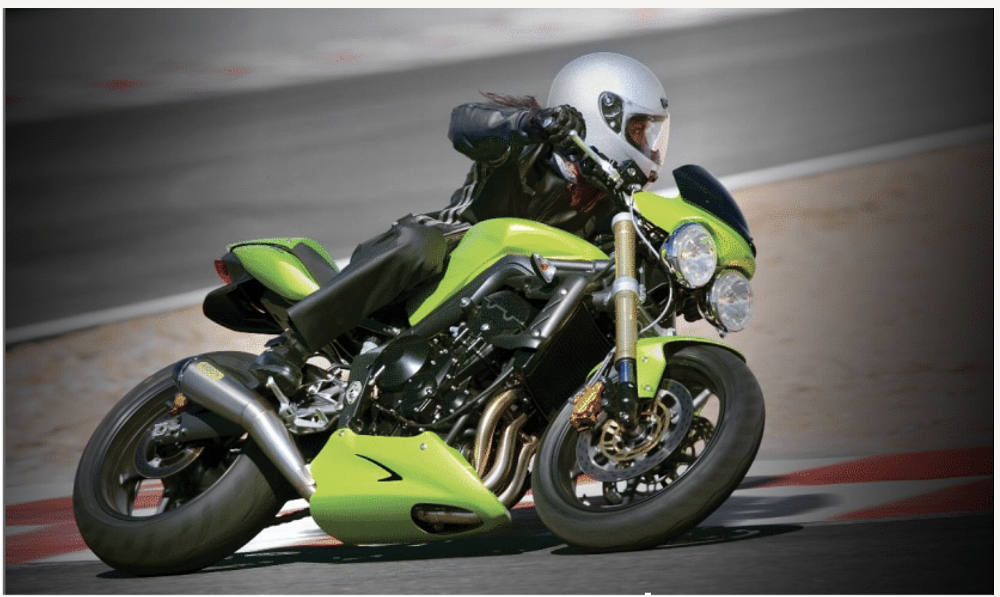
Years later, the Street Triple variants remain segment leaders, and for 2024 (it’s only Q1 of ‘23, talk about an early release!) Triumph has enacted a number of changes to help keep its iconic sports-nakeds at the front of the class.
You (mostly) get more in ‘24
The 2024 models are more of an evolution than a revolution, but there’s no denying that the R and RS benefit from some appealing upgrades.
The headliner is higher power figures for both models thanks in large part to piston and combustion-chamber updates pulled directly from the Moto2 World Championship, where a version of Triumph’s 765 cc triple has served as the spec motor since 2019.
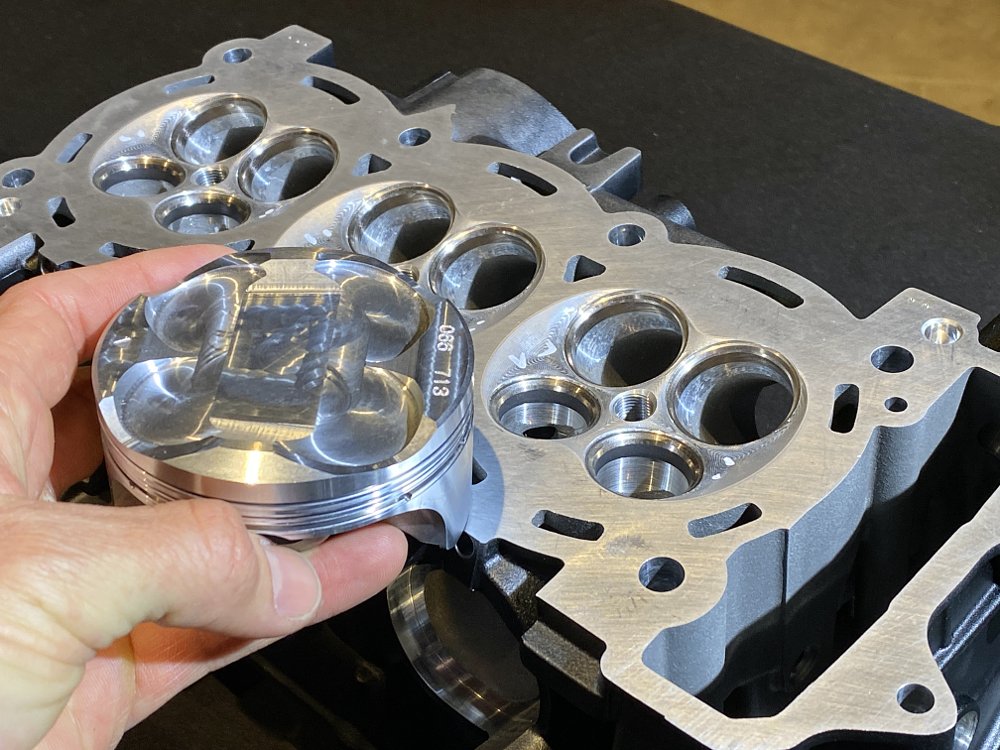
According to Triumph, the $9,995 R now makes 118 horsepower at 11,500 rpm (up two horsepower) while the more premium, $12,595 RS cranks out 128 ponies at 12,000 rpm (up seven horsepower). The engines are mechanically identical to each other, and Triumph says the performance difference is due entirely to ignition and fuel tuning, with the RS focused more toward track use where rpm remain high. Both bikes now have a slight bump in torque across the rev range, topping out at 59.0 foot-pounds at 9,500 rpm.
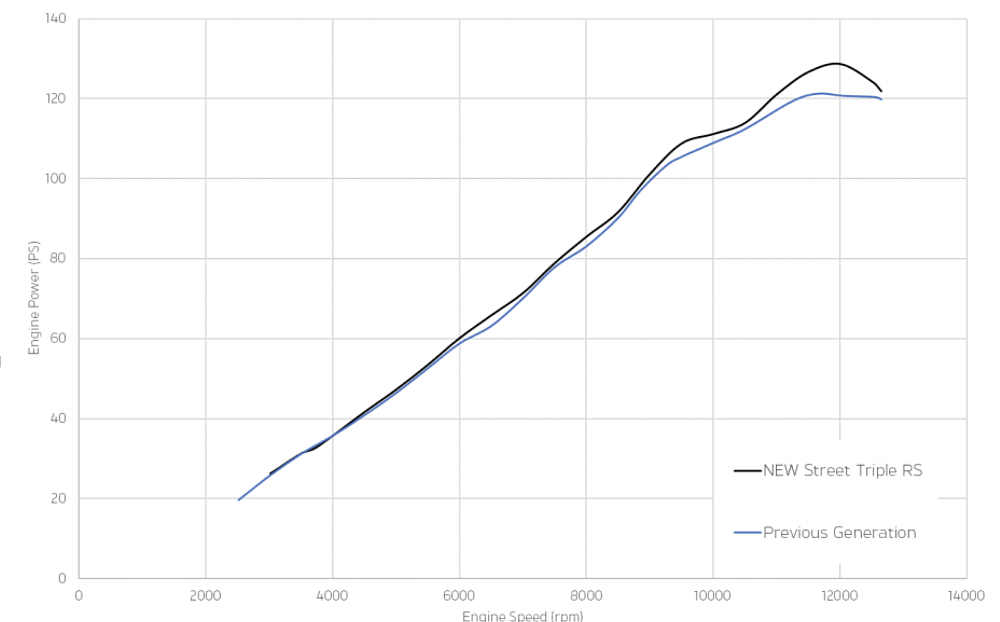
Deeper inside the engine, an updated transmission with closer ratios helps expedite acceleration, while shorter final-drive gearing effectively increases thrust across the rev range. There’s also a slightly wider handlebar, updates to the four standard ride modes, an IMU that adds cornering algorithms to the multi-level traction control and ABS, plus new styling.

The Street’s updated aesthetic brings about the only real drawback for the 2024 models: a smaller tank. The sharper-edged fuel cell now holds four gallons (3.96, to be exact), down from 4.6 gallons on the previous model. That’ll be a disappointment for those who like to travel farther than 120 miles between fuel stops (or 100 miles if you're hauling ass like we were), but in Triumph’s defense, three other popular bikes in the category (the MT-09, Monster, and Duke 890) have even smaller, 3.7-gallon tanks.
Upgrade to the RS
A hallmark of the Street Triple lineup is a choice of three trim packages. In his review of the 2020 Street Triple 765 RS, Lance suggested Triumph would be better served with just two models, and for all intents and purposes, that’s what’s on the menu for 2024, since the limited-run, clip-on equipped Street Triple Moto2 Edition is already sold out. Thankfully, the RS packs most of the Moto2’s punch.

For a 25% ($2,600) increase in MSRP over the R, the RS gets you a number of suspension, brake, electronic, and styling upgrades that Triumph says “set the new performance naked sports benchmark.”
To get there, the RS has a Showa Big Piston Fork instead of the Separate Function Fork on the R. With springs and damping cartridges in both fork legs, the BPF is more tunable for aggressive riding. At the back, a lustrous Öhlins shock replaces the mass-market Showa; they’re both fully adjustable, but the Öhlins unit has more refinement. A spacer under the Öhlins raises the RS’s back end about 10 mm, steepening the head angle and slightly reducing trail for quicker steering.
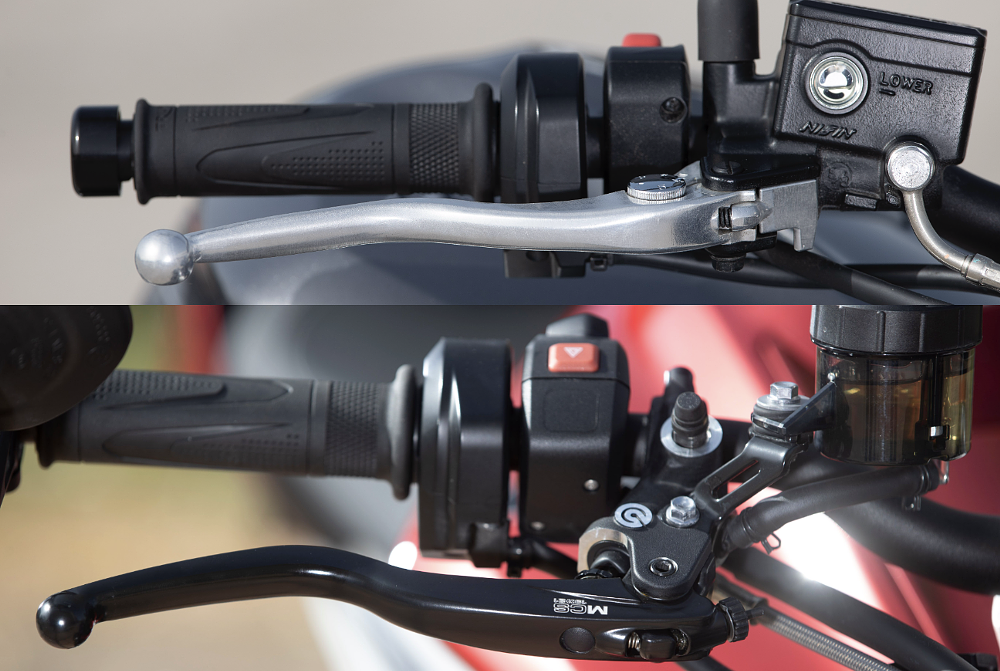
Brake equipment is more premium on the RS as well, with Brembo’s latest top-tier Stylema calipers and an MCS radial master cylinder in place of the decade-old Brembo M4.32s and a white-label axial master cylinder. Both bikes have Triumph’s bi-directional quickshifter and linked front and rear brakes, but the RS gets an additional “Track” ride mode that unlinks the brakes and has drastically more lenient ABS and TC settings. And while the R rolls on general-purpose Continental ContiRoad sport-touring tires, the RS is equipped with Pirelli’s exceptional, track-ready Supercorsa SP buns.
Other differences are mostly for looks. That includes the five-inch TFT dash we’ve seen in years past, while the base R now uses the combined LCD/TFT unit originally seen on the Trident and also used on the Tiger Sport 660. More on the dashes later, as the RS’s setup ended up being my biggest complaint about the bike.
Street Triples on the street
To sample these updated Street Triples, Triumph flew journalists to southern Spain and led us through the Andalusian countryside on a “nice little bimble” aboard both bikes, then set us loose at Circuito de Jerez on the RS.
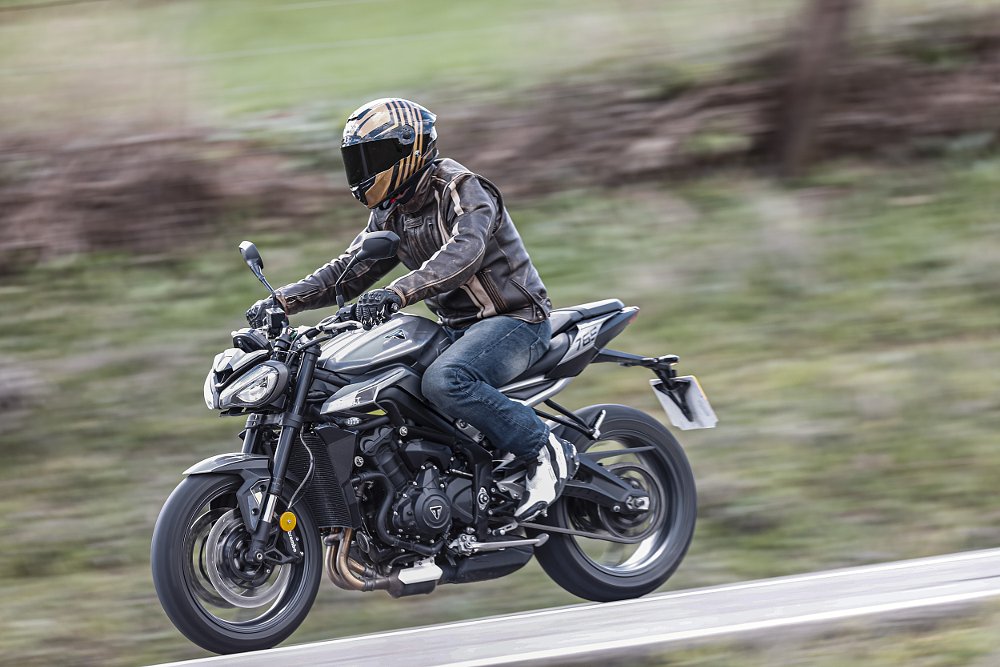
The Street Triple has always presented as a compact, narrow machine, yet it somehow provides pretty spacious ergos. Legroom is a little lacking due to relatively high pegs, but you get a nice relaxed reach to the handlebar and what little weight is carried on your palms is alleviated by the unabated wind blast as soon as you start moving.
Triumph transmissions and fueling are the benchmark by which I judge all other bikes, and as usual they are excellent: Precise, smooth, and intuitive. The bi-directional quickshifter is a treat and everything you do with the throttle is accompanied by the mellifluous song of that delicious triple. It purrs, howls, and then snarls as the revs rise toward a somewhat abrupt rev limiter at 12,500(ish) rpm. Why the ambiguity on the revs? Oh, we’ll get to that.
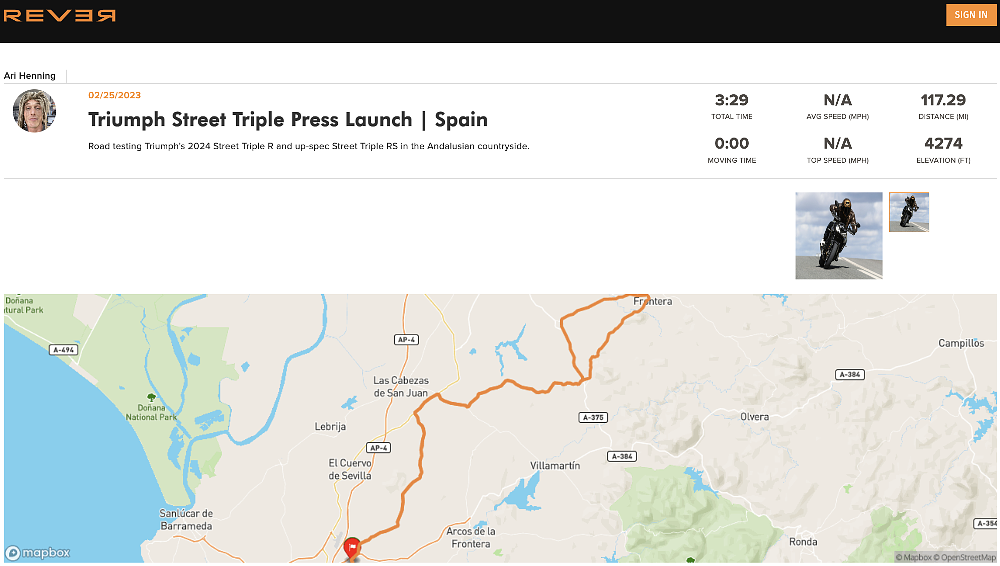
As far as power is concerned, I think I’ve been spoiled by open-class machines that stretch your arms and distort your vision. The Street Triples do not do that. Instead, they deliver steady, robust thrust across the rev range, with perhaps a little more punch from the RS. You can lug either bike from just above idle or downshift twice and slingshot to triple-digit speeds in a moment, but you’ll never feel overwhelmed. And honestly, that’s probably a good thing. I love the hit of a double espresso, but it’s not something I’d really want to do every day.
Switching between the RS and R, there are more, and more pronounced, differences than I was expecting. Of course ride quality is distinct between the two, with the RS’s track-tuned suspension being more taut and sending jolts and hits into your butt and palms. The R is more compliant, but that comes at the cost of chassis control as you pick up the pace.
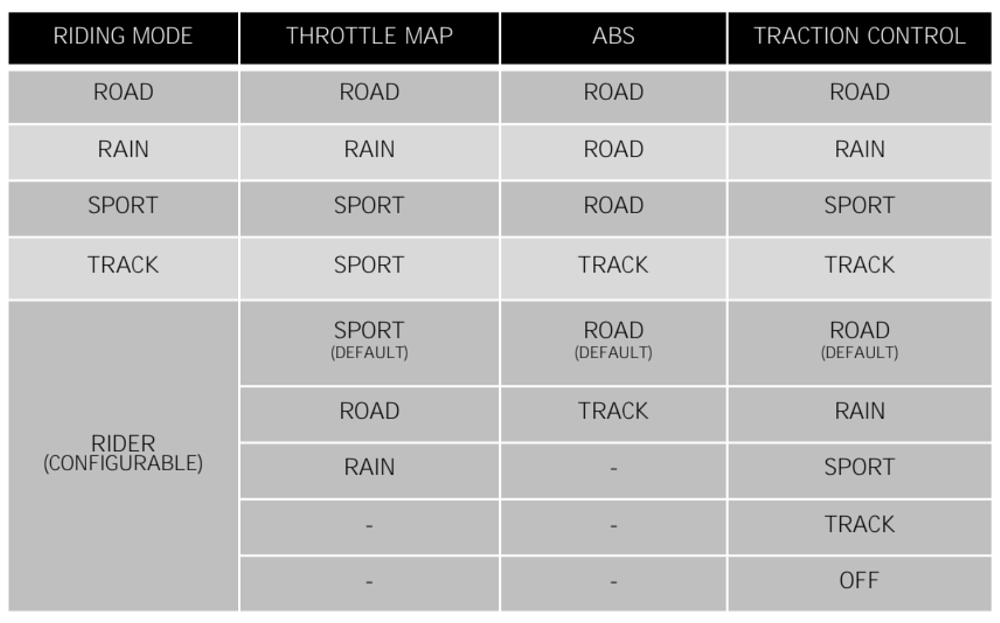
Then again, the Continental tires will dissuade you from aggressive riding before the suspension does. The roads may have been damp and dirty in places, but the Contis consistently felt vague, especially at the front, and many riders experienced subtle smears or outright slides that simply weren’t a problem on the Pirellis.
The other big difference between the two bikes is in the cockpit presentation. Each machine has a distinct dash, switchgear, levers, and mirrors. Despite being adjustable for reach, I couldn’t get the RS’s front brake lever close enough for my preference, which exacerbated a sense of disconnect caused by the abrupt bite of the full-Brembo brake package. The R’s axial master can bring the lever closer, and the setup’s gentler engagement felt more appropriate for street riding while still offering one-finger stopping power.
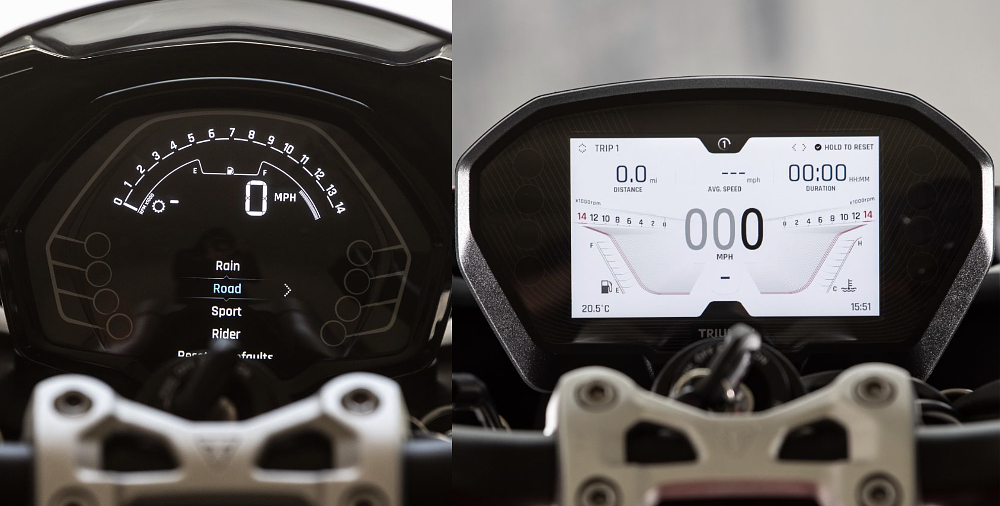
Both sets of switchgear work fine to navigate Triumph’s well-organized menu systems, but there’s a big fork in the road in terms of the displays and resultant user experience. When I reviewed an RS for another publication back in 2017, I praised the TFT dash’s vibrant, coherent layout as being the best on the market. On this bike, it might actually be the worst.
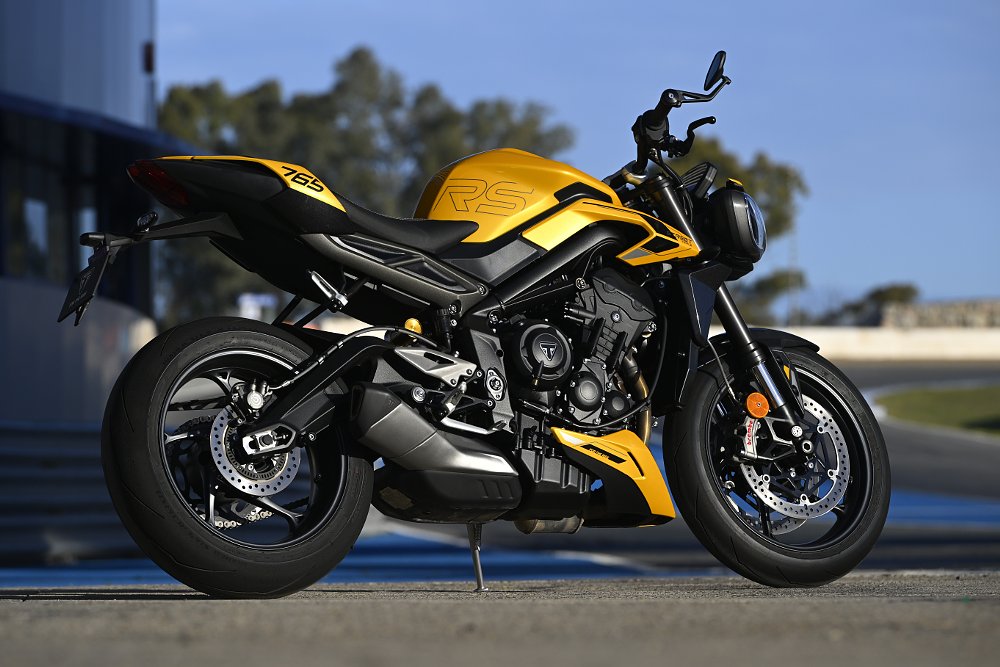
In all of the RS’s four display styles, a complicated layout, ultra-fine lines and borders, small font, and a general lack of contrast between colors make the dash and menus frustrating to use. The tachometer is especially difficult to decipher, hence the struggle with pinpointing the rev limit.
Meanwhile, the lower-spec dash on the R is better in every way except perceived technological spiffery. On the R, you don’t get display styles or color choices, but you won’t get presbyopia, either.
Ripping around at Jerez
Most of the RS’s upgrades are aimed at optimizing the bike’s on-track performance, so that’s where we rode it for the second segment of the press launch. And as a result, I may have a new favorite motorcycling experience: Rolling the throttle wide open toward the crested and blind second apex of Curva Sito Pons with my knee puck stuttering across the blue-and-white curbing.

The Triple’s broad spread of torque means you have a choice of gears in most corners, which is a flexibility not typically offered by multi-cylinder middleweights. The quickshifter was brilliant for upshifts, but as in years past the electronics struggled to accommodate rapid, multi-gear downshifts. I reverted to fanning the clutch for corner entries where I dropped more than two gears.
In the RS’s unique Track mode, TC and ABS are turned down to a bare minimum, the brakes are no longer linked, and the IMU-informed cornering function is disabled. The mode leaves a lot of control in the rider’s hands while also providing a valuable safety net.
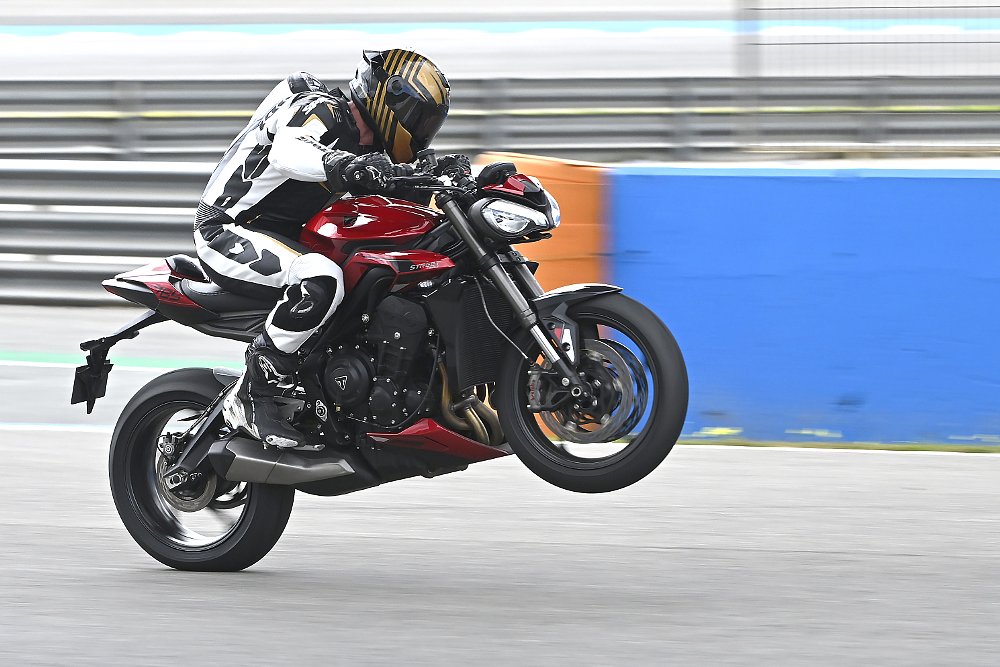
The RS’s powerful brakes felt perfect on the famed MotoGP circuit. This is where the setup was designed to function. Likewise, the suspension was finally working with the speeds and loads it was designed for, and while some heavier, faster riders felt they needed more support, my only gripe came from a lack of front-end feel in the blistering-fast Curva Álex Crivillé and Curva Ferrari.
If we’d had more sessions I would have appreciated the chance to experiment with suspension settings, but I opted to preserve my track time for wearing out tires and knee pucks. It’s not every day you get to ride a superb bike at a world-class circuit.
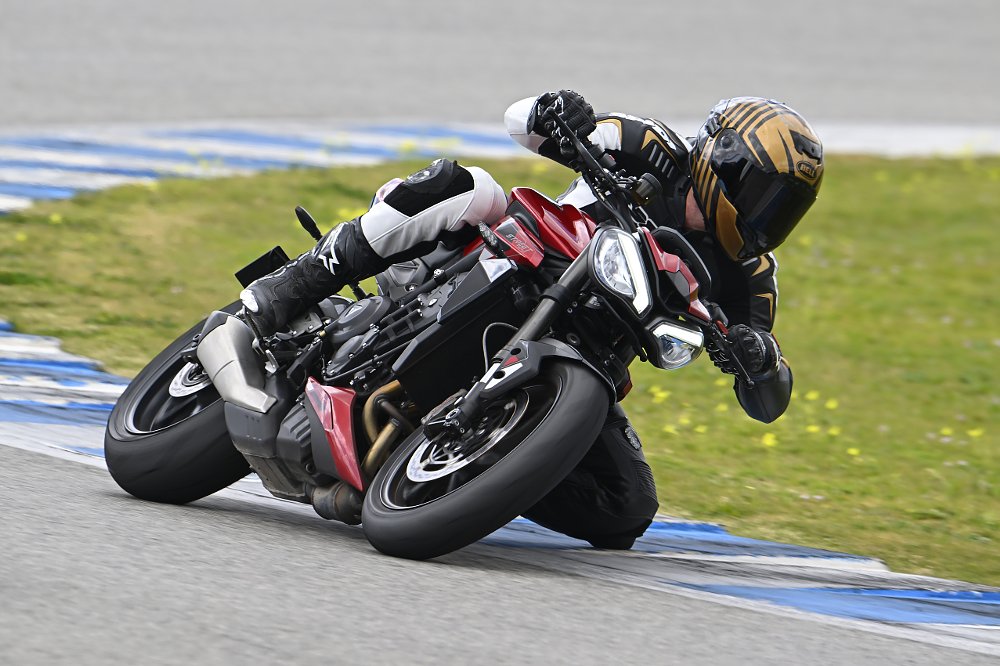
Final thoughts
As a package, the R and RS work great, with some meaningful upgrades that are pretty exciting, like the Moto2 engine parts. The price bump for the RS is significant, but ultimately it’s a good value, and a great option for anyone with track-day aspirations.
However, this is the first time I have ever ridden a new Street Triple and experienced anything I might consider a foible, like the crap display on the RS, the not-great tires on the R, or the lack of a tab on the sidestand that makes it hard to use. Historically, these bikes have presented as though they’ve been revised and refined incessantly by a detail-obsessed team. In some ways, Triumph is a victim of its own success, since consumers have grown to expect a truly high standard of refinement. Any variation from perfection glares on a Street Triple, whereas it might not even stand out on a bike with rougher edges.
Even if I have some nits to pick, these are still tremendous bikes, with a brilliant combination of reasonable ergonomics and tractable power alongside abundant sporting performance.
Yup, the Street Triple is still an excellent alternative to a purebred sport bike.
| 2024 Triumph Street Triple R | 2024 Triumph Street Triple RS | |
|---|---|---|
| Price (MSRP) | $9,995 (Storm Grey), $10,195 (Crystal White) | $12,595 (Silver Ice), $12,795 (Cosmic Yellow and Carnival Red) |
| Engine | 765 cc, liquid-cooled, 12-valve, inline triple | |
|
Transmission, final drive |
Six-speed, chain | |
| Claimed horsepower | 118.0 @11,500 rpm | 128.0 @ 12,000 rpm |
| Claimed torque | 59.0 foot-pounds @ 9,500 rpm | |
| Frame | Aluminum twin-spar | |
| Front suspension | Showa SFF 41 mm fork adjustable for spring preload, compression and rebound damping; 4.5 inches of travel | Showa BPF 41 mm fork adjustable for spring preload, compression and rebound damping; 4.5 inches of travel |
| Rear suspension | Showa shock adjustable for spring preload, compression and rebound damping; 5.3 inches of travel | Öhlins STX40 shock adjustable for spring preload, compression and rebound damping; 5.2 inches of travel |
| Front brake | Dual Brembo M4.32 four-piston calipers, 310 mm discs with ABS | Dual Brembo Stylema four-piston calipers, 310 mm discs with ABS |
| Rear brake | Brembo single-piston caliper, 220 mm disc with ABS | |
| Rake, trail | 23.7 degrees, 3.9 inches | 23.2 degrees, 3.8 inches |
| Wheelbase | 55.2 inches | 55.1 inches |
| Seat height | 32.5 inches | 32.9 inches |
| Fuel capacity | 4.0 gallons | |
| Tires | Continental ContiRoad, 120/70ZR17 front, 180/55ZR17 rear | Pirelli Supercorsa SP, 120/70ZR17 front, 180/55ZR rear |
| Claimed weight | 417 pounds wet | 414 pounds wet |
| Available | April 2023 | |
| Warranty | 24 months | |
| More info | triumphmotorcycles.com | |










